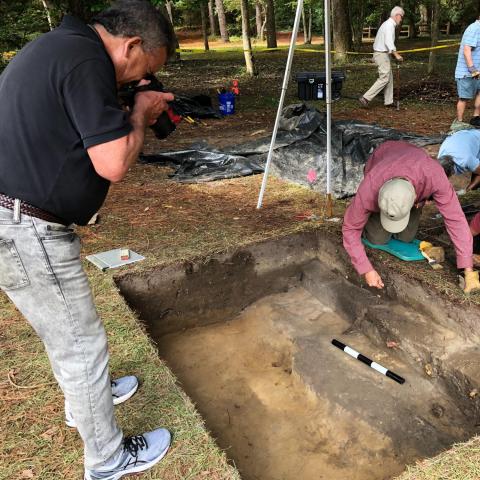
This photo was taken a few hours before the house fell into the ocean/NPS
Another house has been claimed by the Atlantic Ocean at Cape Hatteras National Seashore in North Carolina, with several others precariously perched over the churning waters.
The house, located on G A Kohler Court in Rodanthe, collapsed around 1 p.m. Tuesday. It was the third house to fall into the ocean since early Friday morning, and tenth house to fall in the past four years as the barrier island continues to shift under the pounding Atlantic.
The owner of the house has hired a debris cleanup contractor and seashore employees plan on supplementing cleanup efforts, a park release said.

Some of the debris from the collapse/NPS
Swimmers and surfers were urged to stay out the water in front of the villages of Rodanthe, Waves and Salvo, as there is a large amount of hazardous floating debris being transported by the waves that will cause injuries to those entering the water along the tri-villages area, the release added.
Additionally, at the north end of Rodanthe and for miles to the south, the seashore staff continues to urge visitors to wear hard-soled shoes when walking on the beach to avoid injuries from nail-ridden wooden debris.
Due to dangerous debris on the beach and in the water, Cape Hatteras National Seashore has temporarily closed the beach from G A Kohler Court in Rodanthe to Wimble Shores North Court in Waves. The temporary closure also includes Dare County’s Rodanthe Beach Access at 23731 N.C. Highway 12.

Collection of house collapse debris located south of G A Kohler Court in Rodanthe/NPS
When the houses were first constructed, they were outside the national seashore's boundary, which reaches up to the high tide line on the beaches. But as years have gone by and storms have come and gone, the beachfront has been eroded away to where it is now, with the high tide swirling around the pilings that the houses stand on.
The situation has placed the Park Service in a difficult position, as it's job is to preserve parks unimpaired for future generations, but so far the national seashore staff has not taken any legal action to order the removal of additional homes in danger of collapse, or condemn them, so the homeowners might be able to collect insurance once they do collapse, though it has discussed the issue with Interior Department lawyers.
Last year the Park Service used $700,000 from the Land and Water Conservation Fund to purchase two houses at risk of being toppled and worked to have them removed.


 Support Essential Coverage of Essential Places
Support Essential Coverage of Essential Places







Add comment